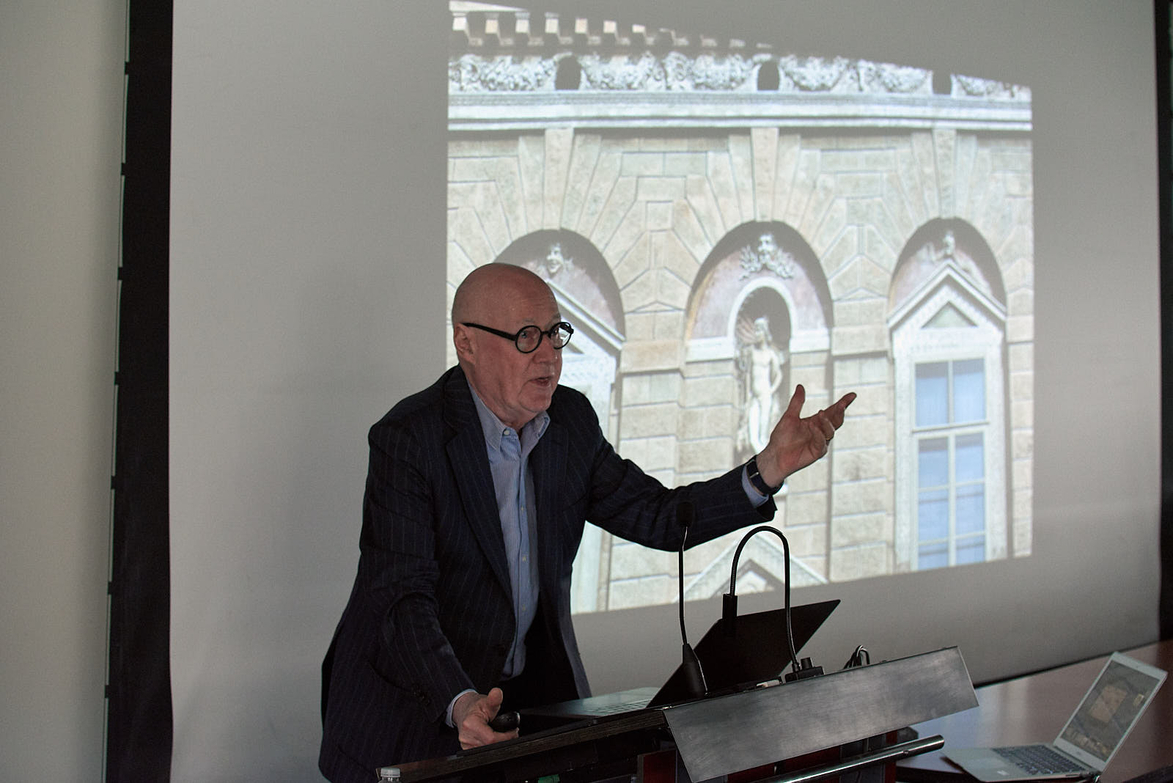Kurt Forster—a widely renowned scholar who had been a visiting professor at the SoA from 2019 to 2021 and presented our esteemed Kassler Lecture in 2008—died on January 6.
Born and educated in Zürich, Forster pursued graduate studies in the history of art and architecture, classical archaeology, philosophy, and literature at Zürich University, the Free University of Berlin, Munich University, and the Warburg Institute, London, before receiving his doctoral degree from Zürich University in 1961.
Over his lifetime, Forster taught at Yale University, the University of California at Berkeley, Stanford University, M.I.T., the Federal Institute of Technology (ETH) in Zurich, and the Bauhaus University in Weimar. In 1984, he was appointed founding director of the Getty Center for the History of Art and the Humanities in Los Angeles (now the Getty Research Institute), where he established one of the most comprehensive libraries and archives, an international program for research in the history and practice of art and architecture, and a series of publications and exhibitions. Forster’s other appointments included director of the Swiss Institute in Rome and of the Stanford Study Center in Berlin; Chair in the History of Art and Architecture at the Federal Institute of Technology, Zürich, where he served as head of the Institute for History and Theory and as president of the Alberto Giacometti Foundation; and director of the Canadian Centre for Architecture (CCA), where he also served as Mellon Professor. His many publications included monographs on Benedetto Antelami, Pontormo, and Karl Friedrich Schinkel; studies on Andrea Palladio, Giulio Romano,Mannerist Painting, and design.
“Kurt was a towering figure in the history of architecture, whose foundational and even magisterial publications on everything from the Italian Renaissance to the oeuvres of Schinkel, Le Corbusier, and Frank Gehry anchor the field in deep erudition,” said Sylvia Lavin, Professor, History and Theory of Architecture. “He was just as influential as a leader of institutions; as the first Director of the Getty Research Institute, Kurt built a deeply interdisciplinary intellectual community that, in turning away from traditional art historical concerns and methods, paved the way for the growing centrality of the arts and architecture to the humanities in general. He continued to reposition architecture as key to the history of ideas during his tenure as Director of the Canadian Centre for Architecture, a commitment he also pursued as a teacher at Princeton, Yale, Stanford, and an innumerable list of other august universities. What drew these many contributions together was Kurt’s extraordinary, rhetorical prowess. He could take any topic, turn it into an intoxicating, literary tale.”
Forster organized major architecture exhibitions on Karl Friedrich Schinkel in Chicago, Carlo Scarpa in Vicenza, Herzog & deMeuron in Montreal, and the 2004 Venice Biennale, themed “Metamorphosis,” among many others. He wrote and published widely on both historical and contemporary architecture with a strong focus on history, theory, and practice. He was a member of the Accademia di San Lucca in Rome and the Research Council of the Palladio Center in Vicenza, Italy, along with the Bauhaus Foundation in Dessau, Germany. He frequently served as a juror for international architectural competitions.
Here at Princeton, courses he taught included History of Architectural Theory and Histories and Theories of 18th and 19th Century Architecture.
“Those of us who had the good fortune to hear him speak, in the seminar room or over dinner, in the hallway or on a review,” said Lavin, “no doubt felt lucky that he chose architecture as the central protagonist of his life and work.”

